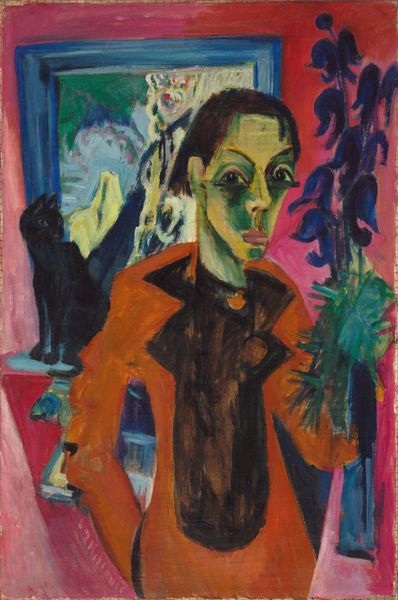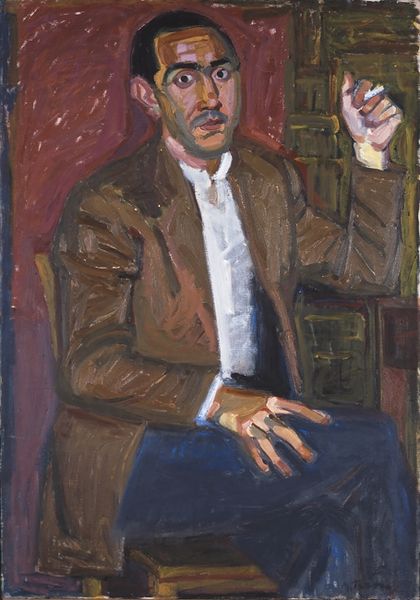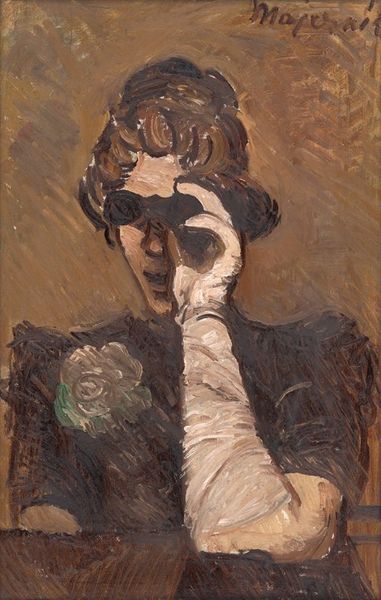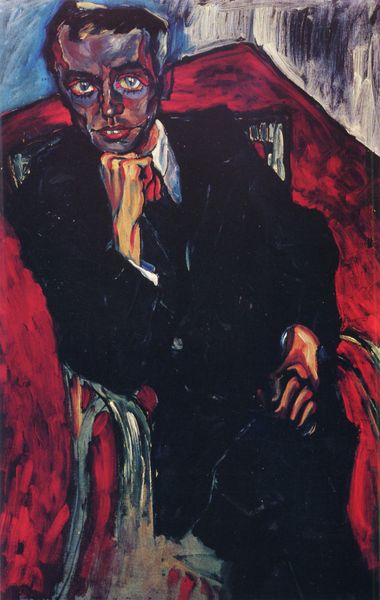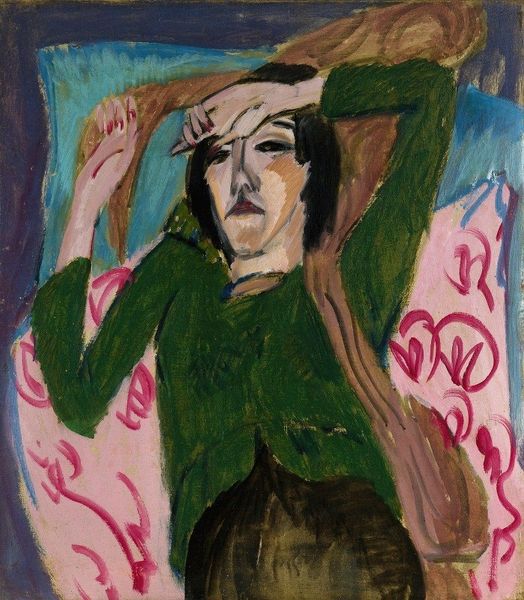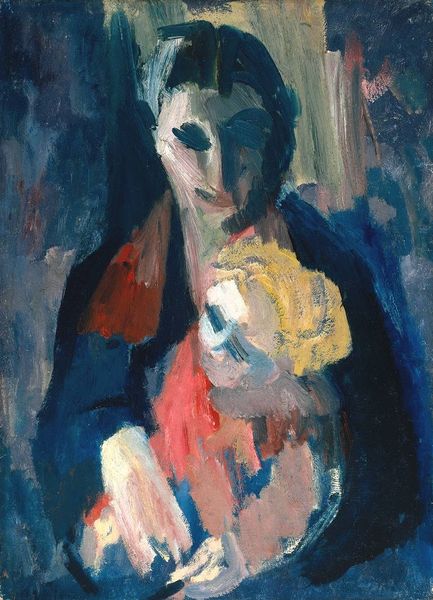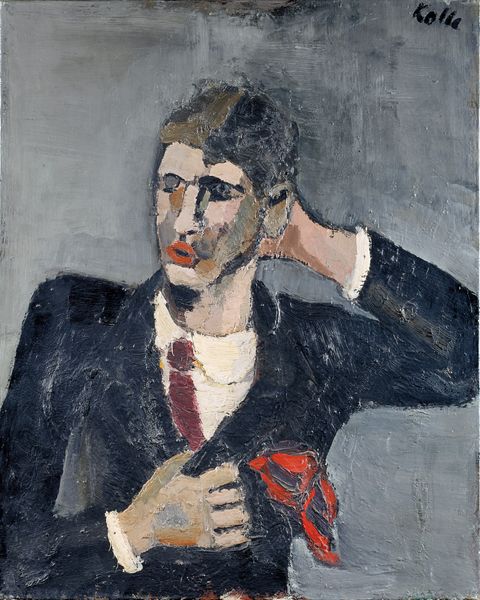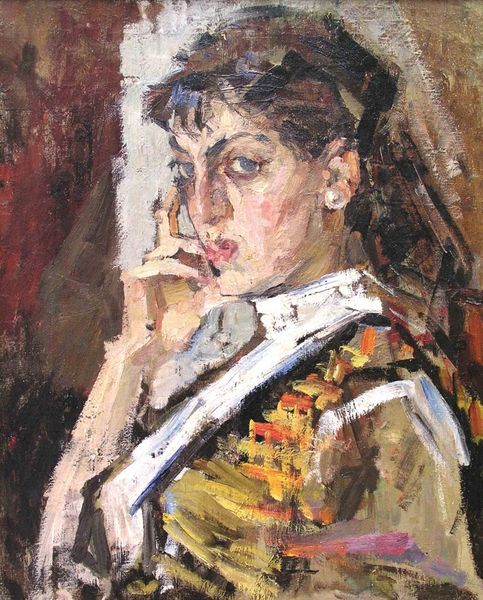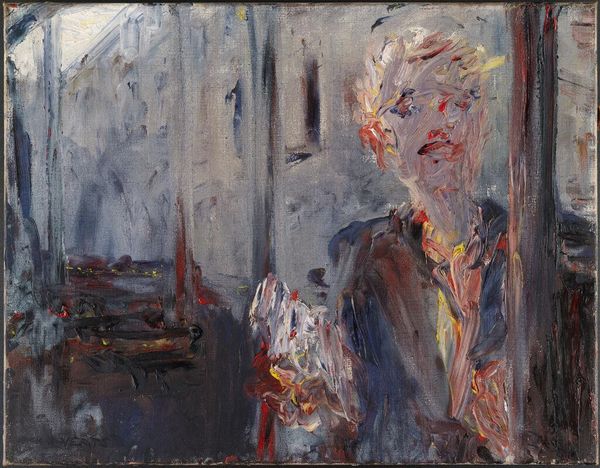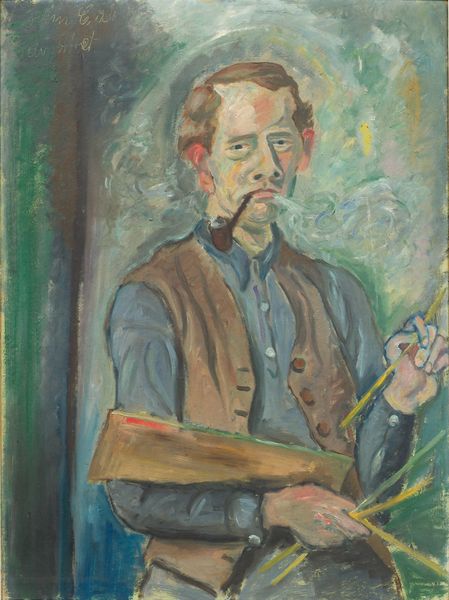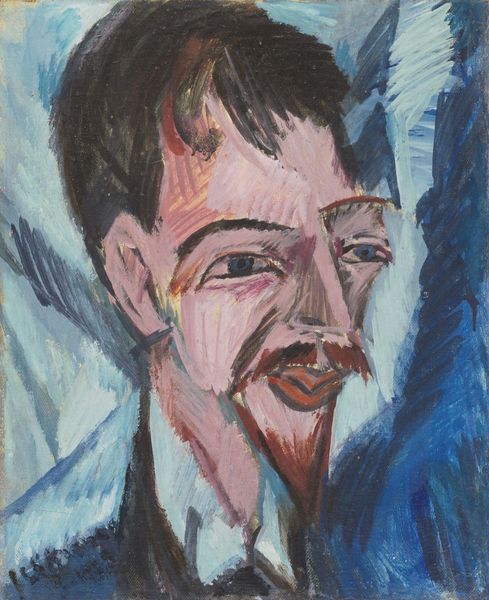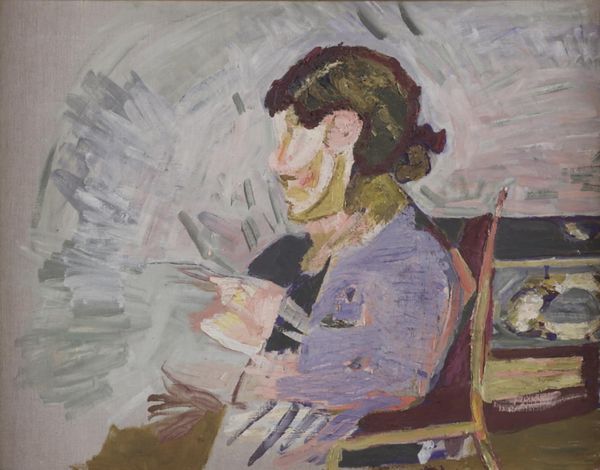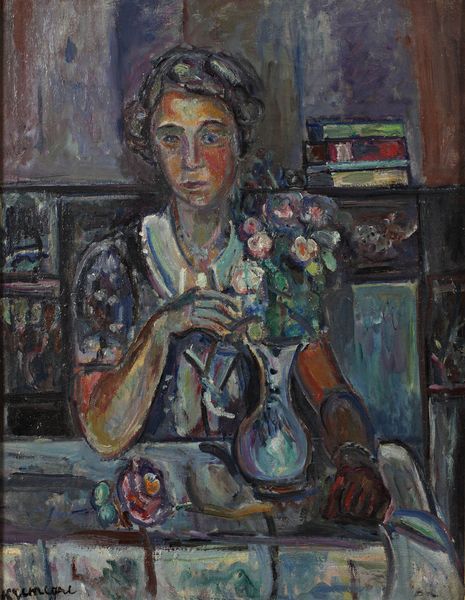
painting, oil-paint
#
portrait
#
abstract painting
#
self-portrait
#
painting
#
oil-paint
#
figuration
#
oil painting
#
painting painterly
#
facial portrait
#
surrealism
#
portrait art
#
fine art portrait
#
realism
Dimensions: 135 x 90 cm
Copyright: Endre Rozsda,Fair Use
Curator: I find Rozsda’s 1939 “Autoportrait” captivating; the textures practically vibrate. What's your first impression? Editor: It has a strikingly melancholic air, doesn't it? The subdued palette, combined with that somewhat haunted expression… it evokes a sense of introspective solitude. Curator: Indeed. Rozsda painted this self-portrait in Paris just before the outbreak of the Second World War. He was grappling with questions of identity as a Hungarian Jew amid growing antisemitism and displacement. It’s a very loaded moment, historically. Editor: The figure seems almost confined by those vertical bars and brushstrokes that form a backdrop—they seem to press him into the foreground, don't they? Notice the subtle contrast between the warmer hues behind the head and those cooler blues of the jacket. It really amplifies his face. Curator: Exactly. Rozsda employs those colours to evoke an unstable, uncertain reality. His placement as a “painterly painter,” reflects this—his art served as an intimate register for these socio-political changes. We also should recognize Rozsda's early experiments with Surrealism at this time. Editor: I agree completely! Even the pose suggests instability. He appears caught mid-motion, clutching at something we can't quite identify. The looseness of the brushwork definitely amplifies that sense of ambiguity, leaving so much open to interpretation. Curator: Absolutely. Consider the social and artistic contexts too. He’s painting a picture of a fragile masculinity and identity at odds with interwar and wartime narratives about identity. Editor: His style is both revealing and concealing. On a formal level, he presents an intensely personal image, yet it's shrouded in ambiguity. Curator: Yes, I see it too, so what at first may appear as an artist creating their own picture slowly evolves into a man searching and grappling for identity as the old certainties crumbled. Editor: I’ll remember Rozsda’s choice of colours—and your context!—for some time to come. Curator: Yes, indeed, now let's delve into something else.
Comments
No comments
Be the first to comment and join the conversation on the ultimate creative platform.
